The Four Main Layers Of A Rainforest
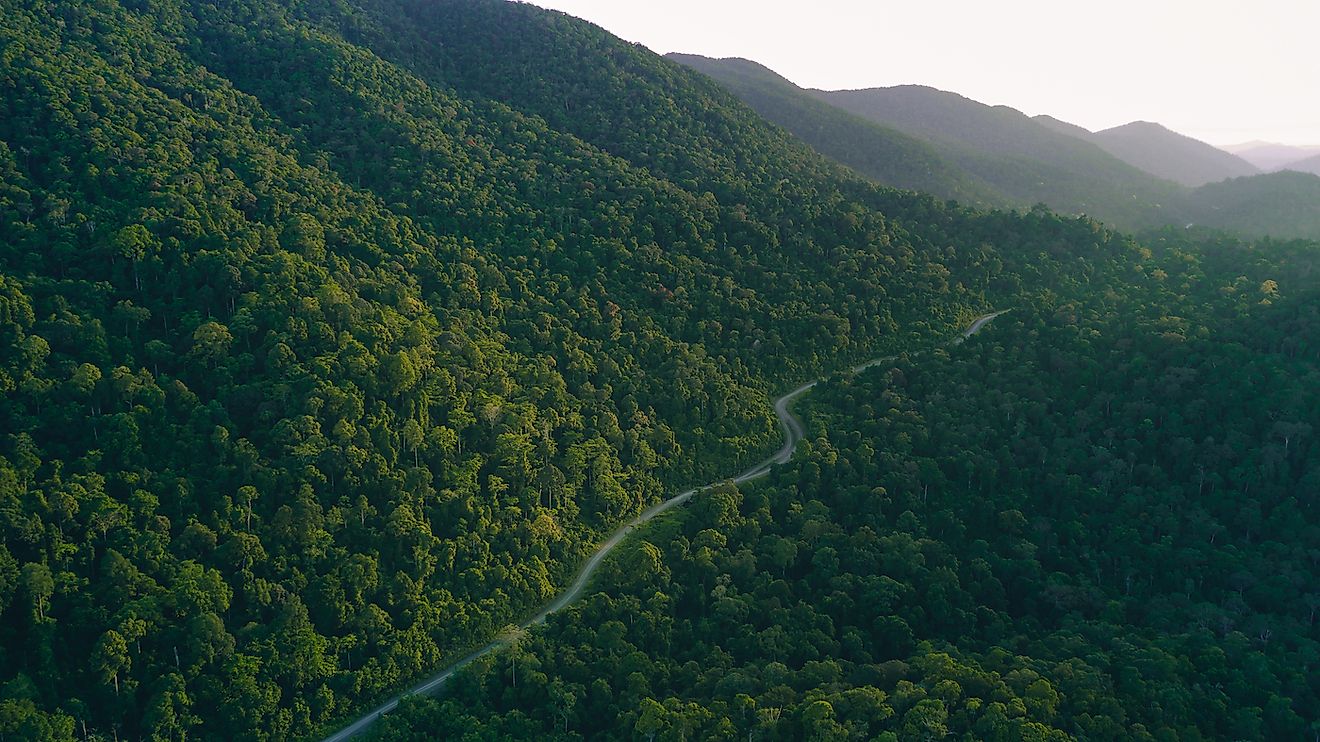
- The rainforests of the world are formed of four layers that receive different amounts of rain, wind, and sun, and as such, are home to different species.
- There are rainforests on all continents except Antarctica.
- There is so little sunlight on the rainforest floor that very few plants grow there, but there are animals that love the decaying plant matter that can be found.
A rainforest is defined by Merriam-Webster as “a tropical woodland with an annual rainfall of at least 100 inches (254 centimeters) and marked by lofty broad-leaved evergreen trees forming a continuous canopy.”
There are different types of rainforests throughout the world, and they exist on every continent except for Antarctica. There are cool rainforests to be found in North America’s Pacific Northwest, as well as in Northern Europe. Rainforests are also found in Southeast Asia and Australia, and the world’s largest ones are located around the Amazon River in South America, as well as near the Congo River in Africa. Rainforests are unique and consist of four different layers of plant life that are home to many different species of flora and fauna, and that vary in accordance with the amount of water, air, and sunlight they receive. The layers of the rainforest include the emergent layer, the canopy, the understory, and the forest floor. Here is more information about each.
Emergent Layer
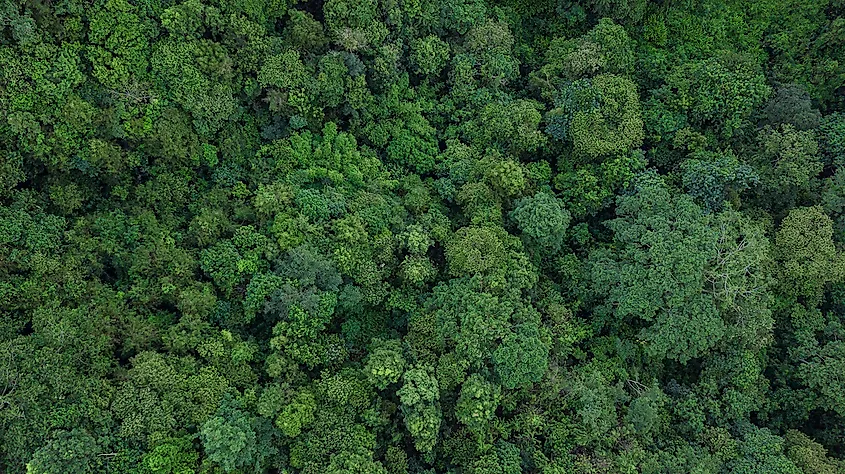
The uppermost layer of the rainforest is called the emergent layer. This covering consists of the tallest trees in the forest. These trees can be up to an astounding 200 feet (60m) tall and 16 feet around (almost 5m). Hardwood evergreens with small waxy leaves that can retain water in the dry season tend to be in this layer. Who and what lives here? The emergent layer is home to animals that can fly or glide, as the branches in this part of the rainforest can be slender, and will not support the weight of larger land animals. Bats as well as hawks, eagles, butterflies, and gliders all love to roost in the emergent layer.
Canopy
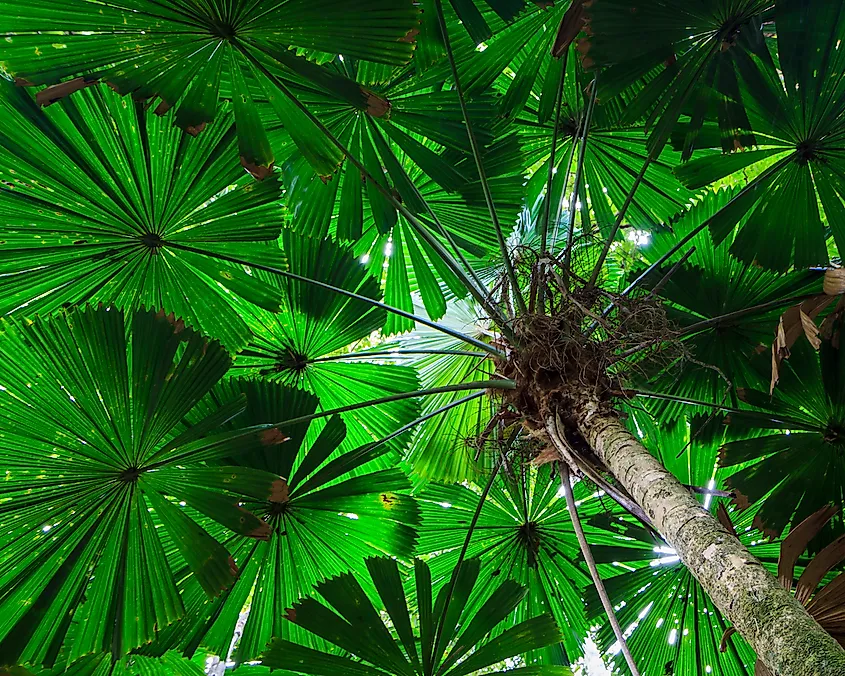
The next layer down in the rainforest is a deep layer of vegetation that is super thick and dense. The canopy of a rainforest is about 20 feet (6m) thick and is so prolific that it blocks out the sunlight, as well as much of the wind and rain.
Do you love fruit? The development of some can be attributed to the environment made by the canopy. Since there is little wind in this layer, seeds from plants need to be encased in gorgeous fruit, in order to spread. The fruit is eaten by hungry animals, who poop out the seeds on the forest floor below, allowing the plant to reproduce.
The rainforest canopy is also home to the greatest amount of animals, compared with other layers of this forest. About 50-90% of the life in a rainforest lives in this section. Thousands of insects, butterflies, and birds such as toucans, are drawn to live in the canopy because of the abundance of food. Trees in this layer have glossy leaves with pointy tips that repel water, and are adapted to living in humidity. The canopy is responsible for housing trees that contribute to the humid climate in tropical rainforest environments. They do this by acting as solar panels that convert all the sun to energy, and surfaces that catch water, and allow it to evaporate into the atmosphere. This layer is the main location where water vapour, atmospheric gasses like carbon dioxide and oxygen, and energy interchange.
Understory
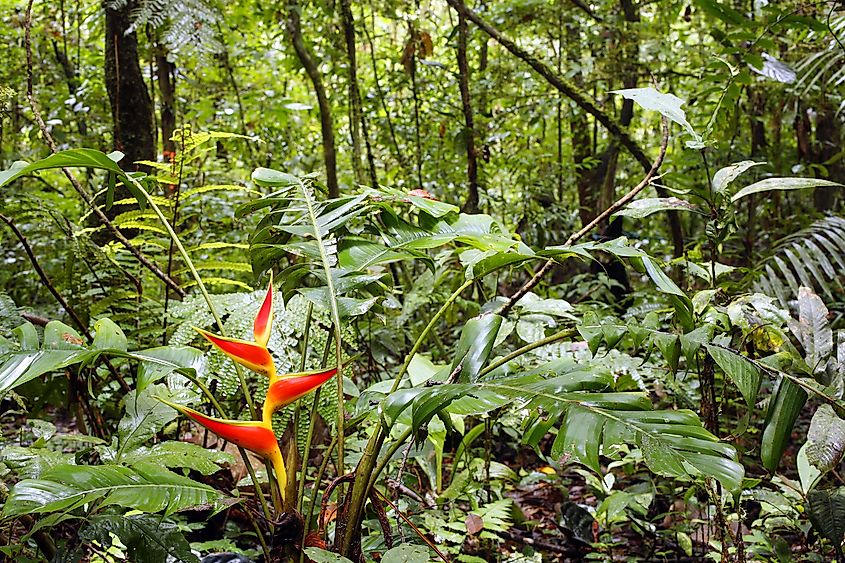
If living in a forested world of semi-darkness is your cup of tea, the understory is for you. This layer of the rainforest is populated with shorter plants that have big leaves, so as to attract as much sunlight as possible, as only about 5% of sunlight reaches this level. Palms and philodendrons call this space home, and other plants that produce large flowers that smell great. The flowers are needed to attract pollinators in this environment that does not get a lot of light. The thickness of the canopy shelters seedlings from strong winds, allowing them to grow, but in a mature rainforest, the understory is rather sparse. If there is light let in, scrubby vegetation will grow as well as fast growing vines, which can crowd out keystone tree species. Without a gap, it will generally be too dark for much to proliferate. Animals can camouflage well in the low light, and the understory is home to tree frogs, primates, forest elephants, and snakes like pythons.
Forest Floor
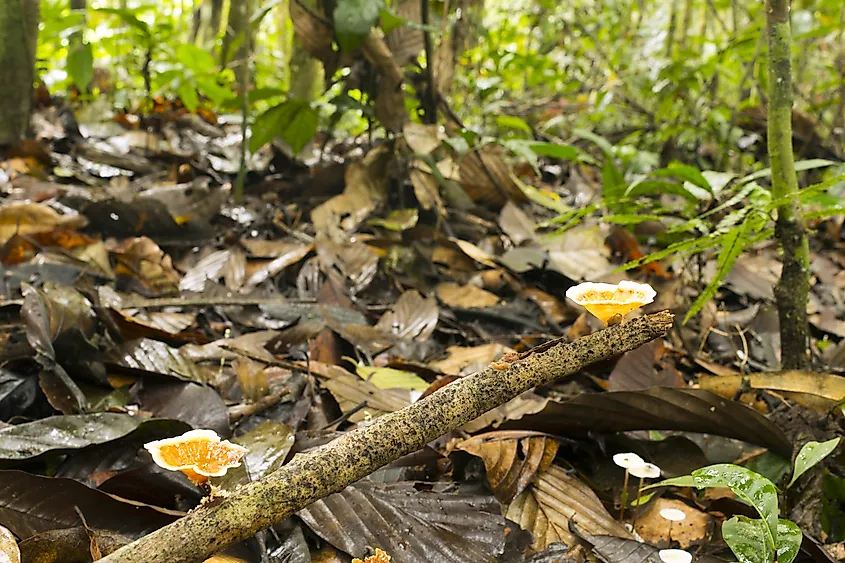
The forest floor is very dark in a rainforest, and hence, it is not the home to many plants. There is too little sunlight here for plants to grow. The soil in a rainforest is nutrient poor and lacks things like calcium and magnesium and is essentially a “wet desert”, but it does have elements that help to decompose plant matter that falls to the ground, and is rich in carbon. Fungi, bacteria, and insects speed up the process of decomposition, as well as the hot, humid environment. This causes nutrients to be cycled out of the soil and into the surrounding vegetation quickly, compared with other types of forests.
Leaves, fruit, and other plant matter that fall to the ground decay rapidly due to the high humidity, and so animals such as slugs, worms, and termites love this space. Other creatures such as anteaters, armadillos, and wild pigs can find something to eat on the forest floor as insects, as well as roots and tubers are abundant. Amazingly, some rainforest floors even have dolphins swimming in them. The Amazon River winds through South America’s rainforest and the pink river dolphin, one of the world’s only freshwater dolphins, can be found swimming here.
Part Of A Global Ecosystem
Rainforests are an important part of the Earth’s global ecosystem. Each layer of a rainforest is linked to the others, and without its health, the rest of the forest would perish. Animals and plants are constantly cycling nutrients up to the canopy and back down again. Forests in general are important for human existence as plants take carbon dioxide (CO2) from the atmosphere, as they absorb it during photosynthesis. Without the presence of vast forests such as those found in rainforests, the effects of greenhouse gases on our planet could be more pronounced. Rainforests are also home to so many species of plants and animals that scientists have not had time to discover them all. Should the rainforests be depleted, it could be that the medical cure for some diseases may disappear as well. As the World Wildlife Fund states,
“What is the connection between the blue-green pills in your bathroom cupboard and the Amazon wildlife? The natural roots of medicine.” We all need the world’s rainforests to continue to thrive on Earth, humans, plants, and animals.











